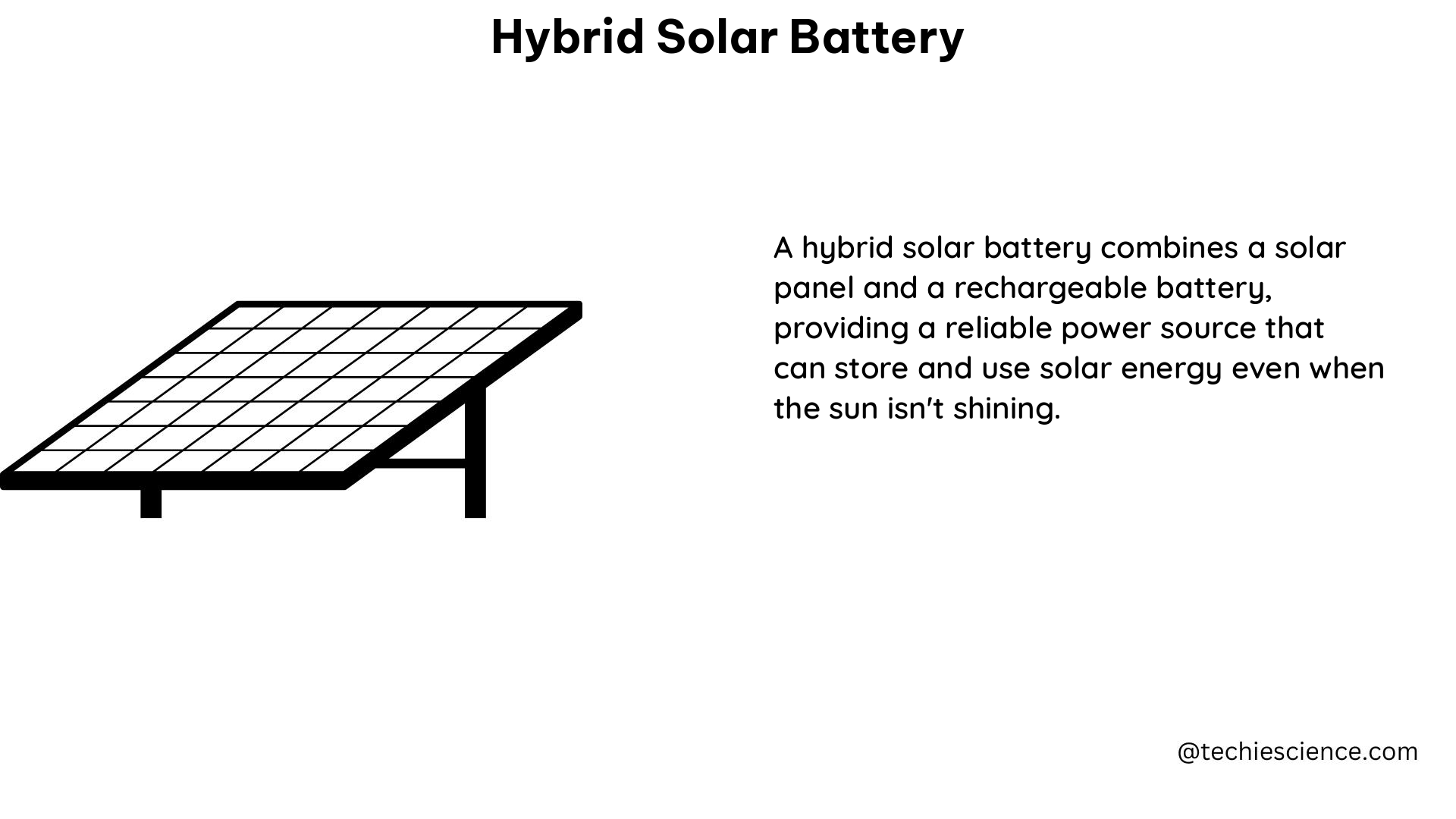Hybrid solar batteries are an essential component of solar energy systems, providing advanced energy storage and management capabilities that enhance the overall performance and efficiency of the system. These batteries seamlessly integrate with solar photovoltaic (PV) arrays, enabling the storage and dispatch of renewable energy to meet varying demand and grid requirements.
Power and Energy Ratings
Hybrid solar batteries are typically rated in terms of power (MW) and energy (MWh) capacity. For instance, a 10MW/20MWh battery system can discharge at a rate of 10MW for 2 hours. This power and energy rating is crucial for determining the system’s ability to meet peak demand, provide grid services, and ensure reliable backup power during periods of low solar generation.
| Battery System | Power Rating | Energy Rating | Discharge Duration |
|---|---|---|---|
| System A | 10 MW | 20 MWh | 2 hours |
| System B | 5 MW | 10 MWh | 2 hours |
| System C | 20 MW | 40 MWh | 2 hours |
Round-Trip Efficiency

The round-trip efficiency of a hybrid solar battery refers to the percentage of energy that can be retrieved from the battery compared to the energy used to charge it. For example, a battery with a round-trip efficiency of 90% would return 90% of the energy used to charge it. This efficiency is a critical factor in determining the overall system’s energy utilization and cost-effectiveness.
Typical round-trip efficiencies for different battery technologies:
– Lithium-ion batteries: 85-95%
– Lead-acid batteries: 70-85%
– Flow batteries: 75-85%
Depth of Discharge (DoD)
The Depth of Discharge (DoD) is the percentage of a battery’s capacity that has been used. For instance, a lead-acid battery should only be discharged to 20-35% of its total capacity daily, while lithium-ion batteries can be discharged to 80-90% without significantly impacting their lifespan. Maintaining the appropriate DoD is essential for preserving the battery’s longevity and ensuring reliable performance.
| Battery Type | Recommended DoD |
|---|---|
| Lead-acid | 20-35% |
| Lithium-ion | 80-90% |
| Vanadium Redox | 100% |
| Zinc-air | 100% |
Battery Lifespan
The battery lifespan refers to the number of charge-discharge cycles a battery can handle before its capacity starts to degrade significantly. For example, a lithium-ion battery may have a lifespan of around 5,000 cycles, while a lead-acid battery may have a lifespan of 500-2,000 cycles, depending on the depth of discharge and other operating conditions.
| Battery Type | Typical Lifespan (Cycles) |
|---|---|
| Lithium-ion | 3,000 – 5,000 |
| Lead-acid | 500 – 2,000 |
| Vanadium Redox | 10,000 – 20,000 |
| Zinc-air | 2,000 – 4,000 |
Response Time
The response time of a hybrid solar battery is the time it takes for the battery to start discharging power once it has been signaled to do so. Hybrid solar batteries typically have fast response times, often in the range of milliseconds to seconds, making them suitable for grid services and frequency regulation applications.
| Battery Type | Typical Response Time |
|---|---|
| Lithium-ion | 10-100 ms |
| Lead-acid | 100-500 ms |
| Vanadium Redox | 10-100 ms |
| Zinc-air | 100-500 ms |
Temperature Derating
The temperature derating of a hybrid solar battery refers to the reduction in battery capacity and performance due to high temperatures. For example, lead-acid batteries may experience a 10-20% reduction in capacity at temperatures above 30°C. Proper thermal management and temperature control are crucial for maintaining the battery’s performance and lifespan.
| Battery Type | Capacity Reduction at High Temperatures |
|---|---|
| Lead-acid | 10-20% at temperatures above 30°C |
| Lithium-ion | 5-15% at temperatures above 40°C |
| Vanadium Redox | 5-10% at temperatures above 35°C |
| Zinc-air | 10-20% at temperatures above 30°C |
Battery Management System (BMS)
The Battery Management System (BMS) is a critical component that monitors and manages the battery’s operation, ensuring safe and efficient charging and discharging. The BMS also provides communication capabilities, enabling the battery to interact with the solar inverter and other system components. Advanced BMS features include state-of-charge (SoC) estimation, cell balancing, thermal management, and fault detection.
C-Rating
The C-Rating is a measure of a battery’s maximum discharge rate. For instance, a battery with a C-rating of 2C can discharge its full capacity in 30 minutes (2 x 30 = 60 minutes or 1 hour). The C-Rating is an important factor in determining the battery’s ability to provide high-power output for applications such as grid services and peak shaving.
| Battery Type | Typical C-Rating |
|---|---|
| Lithium-ion | 1C – 5C |
| Lead-acid | 0.2C – 1C |
| Vanadium Redox | 0.5C – 2C |
| Zinc-air | 0.5C – 1C |
By understanding these technical specifications and parameters, solar energy system designers, installers, and operators can optimize the performance, efficiency, and reliability of hybrid solar battery systems, ensuring the seamless integration of renewable energy into the grid.
References:
– Battery Storage: How Can a Storage Facility Improve Your Solar Yield?
– Hybrid Solar-Battery Systems for Resilient Power
– Designing Off-Grid Hybrid Solar Systems
– Battery University: What is C-rate?
– Battery University: Charging Lead-acid
– Battery University: Charging Lithium-ion

The lambdageeks.com Core SME Team is a group of experienced subject matter experts from diverse scientific and technical fields including Physics, Chemistry, Technology,Electronics & Electrical Engineering, Automotive, Mechanical Engineering. Our team collaborates to create high-quality, well-researched articles on a wide range of science and technology topics for the lambdageeks.com website.
All Our Senior SME are having more than 7 Years of experience in the respective fields . They are either Working Industry Professionals or assocaited With different Universities. Refer Our Authors Page to get to know About our Core SMEs.